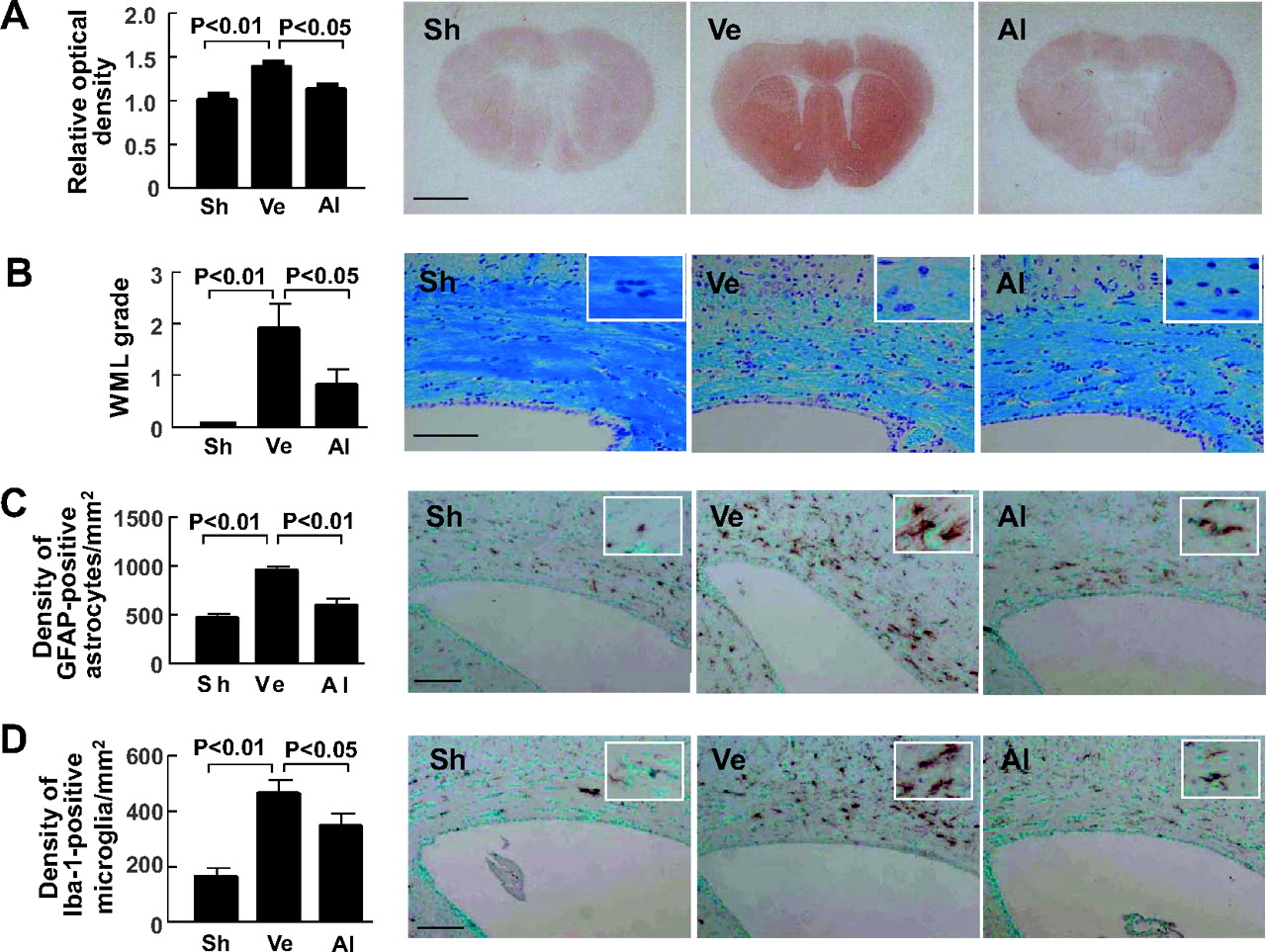Bilateral common artery stenosis is a model for white matter ischemice vascular damage, by causing cerebral hypoperfusion via partial bilateral common carotid artery occluasion. It is implemented by twining a 0.18 mm diameter steel coil around the two CCA’s (common carotid arteries). The surgical procedure, apart from causing white matter diffused damage, also demonstrated to exert cognitive impairements in the Y maze (working memory, reference memory) and the 8 arm maize (working memory).
This model is applicable only to mice, since in rats this procedure also causes significant damage to the visual pathways.
Adapted with permission from Lippincott Williams and Wilkins/Wolters Kluwer Health:
Hypertension. 58(4): 635-42, copyright 2011.
Dong et al, 2011. Effects of Aliskiren (a renin inhibitor) on cerebral hypoxia (top graph (A) and hypoxyprobe stained microgrpahs), white matter lesions in the corpus callosum (CC)- (second row from top graph (B) and following Kluver-Barrera stained micrographs), increase in CC density of GFAP positive astrocytes (third row from top graph (C) and following immunostained micrographs) and increase in density of CC iba-1 positive microglia (bottom row (D) and following immunostained micrographs). In all graphs and micrographs Sh=sham operated animals, Ve= BCAS (=bilateral carotid artery stenosis) operated mice treated with vehicle Al=BCAS operated animals treated with aliskiren. BCAS procedure exerted an increase in brain hypoxia (A), significant increase in WM lesions (B), density of CC GFAP positive astrocytes (C) and of iba1 positive microglia (D), all these changes were reversed by aliskiren.
References
Dong YF, Kataoka K, Toyama K, Sueta D, Koibuchi N, Yamamoto E, Yata K, Tomimoto H, Ogawa H, Kim-Mitsuyama S (2011) Attenuation of brain damage and cognitive impairment by direct renin inhibition in mice with chronic cerebral hypoperfusion. Hypertension. 58(4): 635-42.
Bink DI, Ritz K, Aronica E, vander Weerd L, Daemen MJ. Mouse models to study the effect of cardiovascular risk factors on brain structure and cognition. Journal of Cerebral Blood Flow and Metabolism 2013; 33(11): 1666-84.

